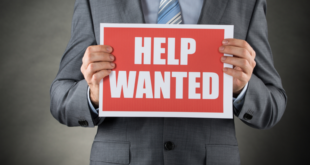When COVID-19 hit some were predicting a quick economic recovery, maybe even avoiding a recession. Now they’re singing a different tune.
It has become one of the country’s most asked questions in the last month or two, and a subject of endless speculation in the media: how soon will the economy recover from the COVID-19 pandemic?
Opinions vary, but “not anytime soon” is the assessment of the UC Riverside School of Business Center for Economic Forecasting and Development.
In March, when the pandemic hit, the center predicted that both the U.S. and local economies would take a “serious hit” through at least the second quarter of this year, but that a relatively quick recovery was possible. There might not even be a recession, but the report made it clear that, for the moment, there was going to be a severe downturn.
“The U.S. economy is about to hit one big pothole,” said Christopher Thornberg, director of the business center.
Well, the pothole has gotten a lot bigger.
The jobs, income, and public revenue that were lost in the last four months will be recovered more slowly than originally expected, mostly because of the ill-advised reopening of restaurants and other businesses and the virus’ subsequent resurgence.
Both the local and national economies probably won’t return to normal, or anything close to normal, until the end of 2021 at the earliest, said Taner Osman, the center’s research manager and a co-author of its reassessment of the economy in the wake of COVID-19.
“We always knew that controlling the virus was central to the economic recovery so it’s truly gut wrenching to watch a new wave of cases trigger this step back in the re-opening of businesses and other public places,” Osman wrote in a summary of the nine-page report.
“Returning to normalcy in terms of employment, the supply chain, and consumer demand is directly tied to controlling the spread of the virus. It is a primary factor in determining the speed of the economic recovery.”
The analysis, released this month, found that recovery was “somewhat underway” in May, despite huge losses in April. It also noted that the recovery was happening slower in California than in other parts of the country, mostly because other states reopened their economies sooner than did California.
Also, Californians might have been more cautious when the state’s reopened: more reluctant to go shopping or eat in a restaurant, for example.
The report also breaks down different aspects of the economic downturn, pointing out that some sectors have been hit much harder than others.
For example, leisure and hospitality have lost 6.3 million jobs nationwide since March, about 37 percent of the country’s job losses during that time, even though that part of the economy added 1.2 million jobs in May.
However, with the recent resurgence of the virus and the possibility of a second wave in the fall, those gains could disappear quickly.
Disposable income fell nearly five percent in May, but consumption increased by 8.2 percent. The increase can be attributed to unemployment benefits and federal stimulus checks, although the federal assistance is scheduled to expire at the end of the month.
Also, 75 percent of California residents who have lost their jobs because of COVID-19 say they believe they’re temporarily unemployed, and that they expect to return to work when the economy reopens.
Locally, the Inland Empire’s industrial sector has added 2,600 jobs since the state first issued stay-at-home orders, a year-over-year increase of 3.6 percent. Otherwise, the Inland region’s economy took a huge hit: employment since May is down 12 percent, compared with 15 percent in Orange County and 13 percent in Los Angeles County and California as a whole.
The center isn’t the only entity that is pessimistic about the economy’s long-term prospects.
The Congressional Budget Office this week issued a report that declared the country’s economic outlook for the next 10 years has “deteriorated significantly” since January, and that economic growth in the second half of this year is expected to be slower than the projections the office published in May.
The overall picture is that the national and local economies are going to keep struggling, and things will get worse – maybe much worse – if another round of governmental stimulus doesn’t happen, Osman said.
“A vaccine, even if we got one tomorrow, probably wouldn’t solve our problems soon,” Osman said during an interview. ‘“It’s going to be a long road back. One of my biggest concerns is that we might not get enough stimulus to keep things afloat.
“If that were to happen, it would put the economy on a very bad trajectory, worse than the one it’s on now.”
The local economy might not rebound until well into 2022, said Robert Kleinhenz, a one-time economist with the center who is now a private economic consultant in Long Beach.
“A V-shaped recovery [a quick drop followed by an equally quick recovery] was always optimistic, and it’s pretty obvious that’s not going to happen now,” Kleinhenz said. “We were supposed to have all of our lost GDP back by the end of next year, but that’s looking doubtful. The recovery is going to be a tough slog.”
 IE Business Daily Business news for the Inland Empire.
IE Business Daily Business news for the Inland Empire.


